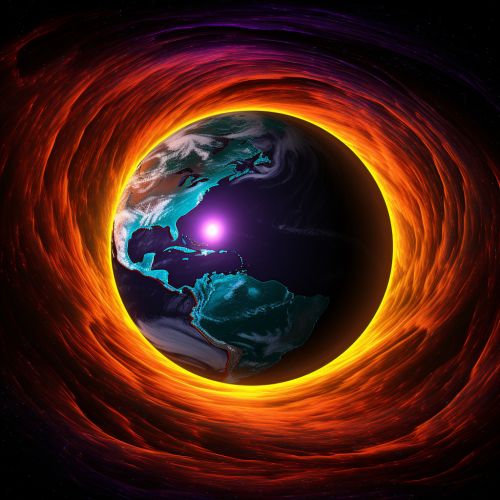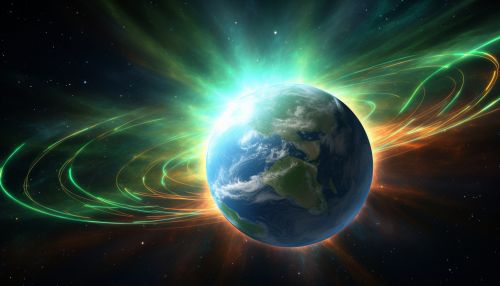The Dynamics of Earths Magnetopause and Space Environment
Introduction
The Magnetopause is the outermost layer of the Earth's magnetic field that interacts with the solar wind, a stream of charged particles emitted by the sun. This interaction forms a protective barrier that shields the Earth from the harmful effects of solar wind. The dynamics of the magnetopause and the space environment are complex and involve several physical phenomena, including magnetic reconnection, plasma flows, and wave-particle interactions.


Earth's Magnetopause
The Earth's magnetopause is a boundary separating the Earth's magnetosphere from the solar wind. It is located at a distance of approximately 10 Earth radii on the sunward side of the Earth. The location and shape of the magnetopause are determined by the balance between the pressure of the Earth's magnetic field and the dynamic pressure of the solar wind.
Magnetic Reconnection
Magnetic reconnection is a fundamental process in plasma physics that changes the topology of magnetic field lines. This process occurs when oppositely directed magnetic field lines come into close contact, allowing them to break and reconnect with each other. In the context of the magnetopause, magnetic reconnection allows solar wind plasma to enter the magnetosphere, which can lead to geomagnetic storms and auroras.
Plasma Flows
The interaction between the Earth's magnetic field and the solar wind results in the formation of plasma flows. These flows can be divided into two main categories: solar wind plasma flows and magnetospheric plasma flows. Solar wind plasma flows are directed away from the sun and carry the solar magnetic field into interplanetary space. On the other hand, magnetospheric plasma flows are driven by the Earth's rotation and the interaction with the solar wind.
Space Environment
The space environment is characterized by a variety of physical phenomena, including solar wind, cosmic rays, and electromagnetic radiation. These phenomena can have significant effects on the Earth's magnetosphere and ionosphere, as well as on spacecraft and satellites.
Solar Wind
The solar wind is a stream of charged particles, primarily protons and electrons, that are ejected from the upper atmosphere of the sun. The solar wind carries with it the solar magnetic field, which can interact with the Earth's magnetic field at the magnetopause.
Cosmic Rays
Cosmic rays are high-energy particles from outer space that can penetrate the Earth's magnetosphere and ionosphere. They are primarily composed of protons, but also include heavier atomic nuclei and a small fraction of electrons and positrons. Cosmic rays can cause ionization in the Earth's atmosphere and can pose a radiation hazard to spacecraft and astronauts.
Electromagnetic Radiation
The space environment is filled with electromagnetic radiation, ranging from low-energy radio waves to high-energy gamma rays. This radiation is emitted by a variety of sources, including the sun, other stars, and distant galaxies. Electromagnetic radiation can interact with the Earth's magnetosphere and ionosphere, affecting their structure and dynamics.
Impacts on Spacecraft and Satellites
The dynamics of the magnetopause and the space environment can have significant effects on spacecraft and satellites. These effects can include damage to electronic systems, degradation of materials, and changes in spacecraft orbits.
Space Weather
The interaction between the solar wind and the Earth's magnetic field can lead to space weather phenomena, such as geomagnetic storms and solar flares. These phenomena can disrupt communication systems, damage satellites, and pose a risk to astronauts.
Radiation Environment
The radiation environment in space, which includes solar wind particles, cosmic rays, and electromagnetic radiation, can pose a significant hazard to spacecraft and astronauts. This radiation can damage electronic systems, degrade materials, and increase the risk of cancer for astronauts.
Conclusion
Understanding the dynamics of the Earth's magnetopause and the space environment is crucial for predicting space weather, protecting spacecraft and satellites, and ensuring the safety of astronauts. Continued research in this field will help us to better understand these complex phenomena and to develop more effective strategies for mitigating their impacts.
